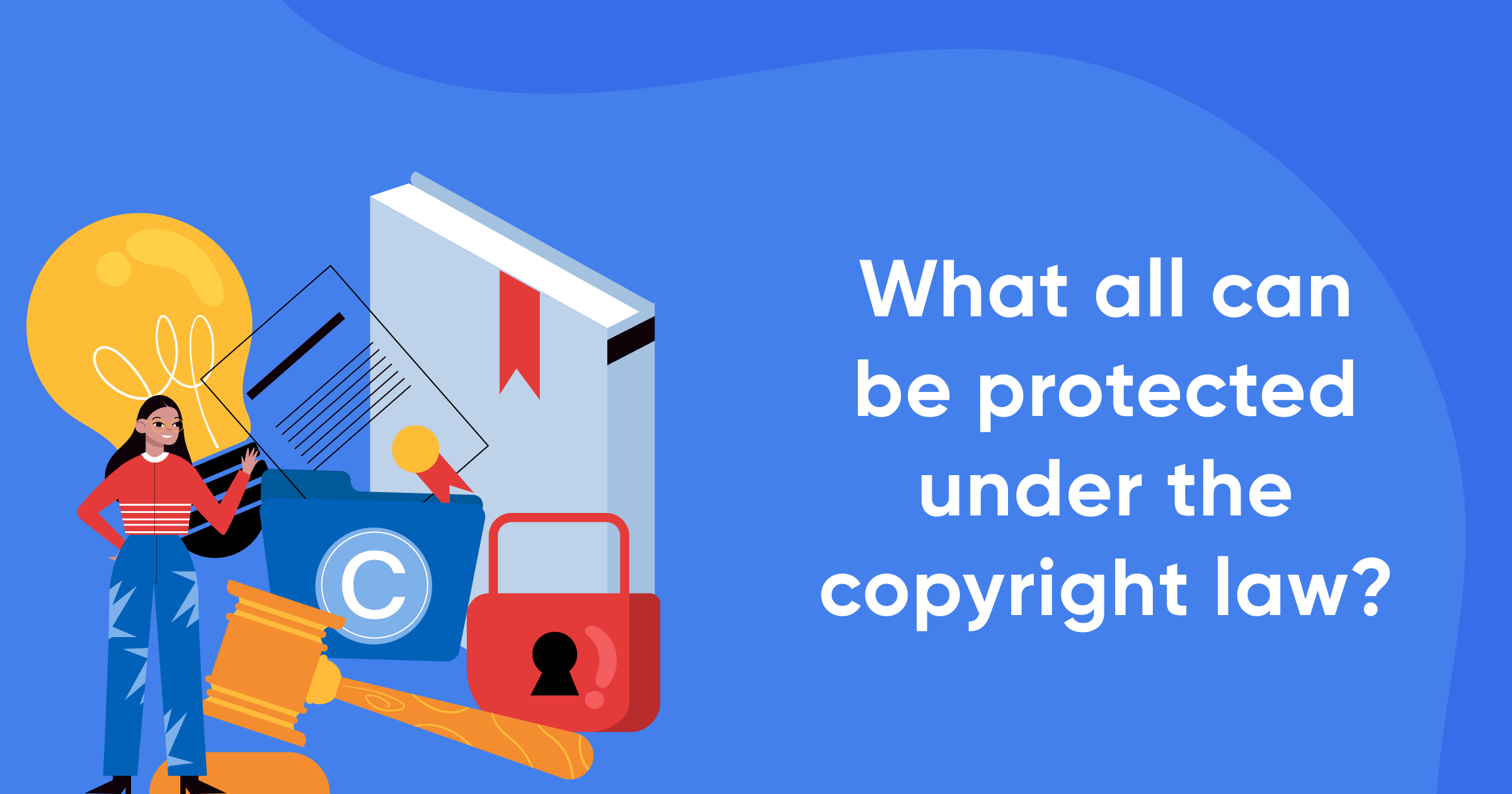Introduction
Copyright law plays a vital role in safeguarding the rights of creators, ensuring that their original works are protected from unauthorized use and distribution. Whether you’re an author, artist, musician, or software developer, understanding what can be protected under copyright law is crucial for preserving your creative efforts. This blog will explore the various types of works eligible for copyright protection, providing a detailed overview of what creators need to know to secure their rights effectively.
Understanding Copyright Protection
Copyright is a form of intellectual property law that grants the creator of an original work exclusive rights to its use and distribution, typically for a specific period. These rights include the ability to reproduce, distribute, perform, display, and create derivative works based on the original. Importantly, copyright protection applies automatically when an eligible work is created and fixed in a tangible medium of expression, such as writing, recording, or digital form.
Literary Works
One of the most common categories protected by copyright law is literary works. This includes written content such as:
- Books, articles, and essays
- Novels, short stories, and poems
- Reports, manuals, and business documents
- Scripts for films, television shows, and plays
Literary works also extend to computer programs and software, which are protected as literary works due to their written code. The protection covers the expression of ideas in written form, not the ideas themselves, ensuring that the creator’s unique way of presenting their work is safeguarded.
Musical Works and Sound Recordings
Music is another key area protected under copyright law. This includes:
- Musical compositions (sheet music, written lyrics)
- Sound recordings (audio tracks, albums)
- Digital audio files and music streams
For musical works, copyright protection covers both the musical composition itself and the sound recording, which are often separate copyrights. This means the creator of the composition (such as a songwriter) and the performer or producer of the sound recording can hold distinct rights.
Dramatic Works
Dramatic works include plays, scripts, and screenplays used for theater, film, television, and radio. Copyright protects the expression of the storyline, dialogue, and characters in these works, ensuring that the creator’s vision is preserved. Additionally, dramatic works may also include choreography and pantomimes, provided they are recorded or notated in some form.
Artistic Works
Artistic works encompass a broad range of visual arts, including:
- Paintings, drawings, and sculptures
- Photographs and illustrations
- Architecture (specifically designs and models)
- Graphic designs and digital artwork
Copyright protection for artistic works covers both traditional and digital formats, ensuring that artists’ creations are protected regardless of the medium. This category also includes applied art, such as jewelry designs and crafts, provided they meet the originality requirement.
Cinematic Works
Films, videos, and other audiovisual content are protected under copyright law as cinematic works. This includes:
- Feature films, documentaries, and short films
- Television shows, web series, and video clips
- Video games and animated works
Cinematic works benefit from copyright protection for the visual and auditory elements, including the script, music, and the unique combination of moving images and sound that create the final product. This protection ensures that creators have control over how their audiovisual content is used and distributed.
Choreographic Works and Pantomimes
Choreographic works and pantomimes are protected when they are notated or recorded. This protection covers the specific sequence of movements and gestures that define the work. Whether for a ballet, modern dance piece, or theatrical pantomime, copyright ensures that these expressive forms of performance art are recognized and safeguarded.
Architectural Works
Architectural works are protected under copyright law when they include original design elements that are not purely functional. This includes:
- Building designs and blueprints
- Architectural models and drawings
While copyright does not cover functional aspects like construction methods, it protects the aesthetic and design features that make a building unique. This ensures that architects’ creative contributions are recognized and protected from unauthorized replication.
Computer Programs and Software
Software and computer programs are protected as literary works due to the written code they consist of. This protection extends to:
- Application software and operating systems
- Source code and object code
- Web applications and mobile apps
Copyright ensures that developers have exclusive rights to their software, including the ability to license or sell their programs. This protection is crucial in the tech industry, where software innovation is a key driver of business success.
Databases and Compilations
Databases and compilations, including data sets, collections of works, and curated lists, can also be protected under copyright law if they involve an original selection or arrangement. This protection covers:
- Digital databases and spreadsheets
- Anthologies, directories, and catalogs
- Curated playlists and collections of content
While the individual elements within a compilation may not be protected, the unique way in which they are selected or arranged can qualify for copyright protection, safeguarding the creator’s effort in compiling the work.
Rights and Limitations of Copyright
While copyright provides extensive protection, it’s important to understand its limitations. Copyright does not protect:
- Ideas, facts, and data
- Methods, processes, and systems
- Common knowledge and public domain works
These limitations ensure that the public can continue to access and use basic knowledge and ideas, while still protecting the original expressions of those ideas. Additionally, copyright protection is time-limited, typically lasting the lifetime of the creator plus 70 years, after which the work enters the public domain.
The Role of Registration in Copyright Protection
Although copyright protection is automatic upon creation, registering your work with the relevant copyright office, such as the U.S. Copyright Office, provides additional benefits. Registration establishes a public record of your copyright and is required if you wish to pursue legal action for infringement. Trademarkia offers assistance in navigating the registration process, helping creators secure their rights more effectively.
Conclusion
Understanding what can be protected under copyright law is essential for anyone involved in creating original works. From literary and musical compositions to digital software and databases, copyright offers a broad shield that helps protect your creative efforts from unauthorized use. By knowing your rights and taking steps to register your works, you can ensure your creations remain secure and under your control.







